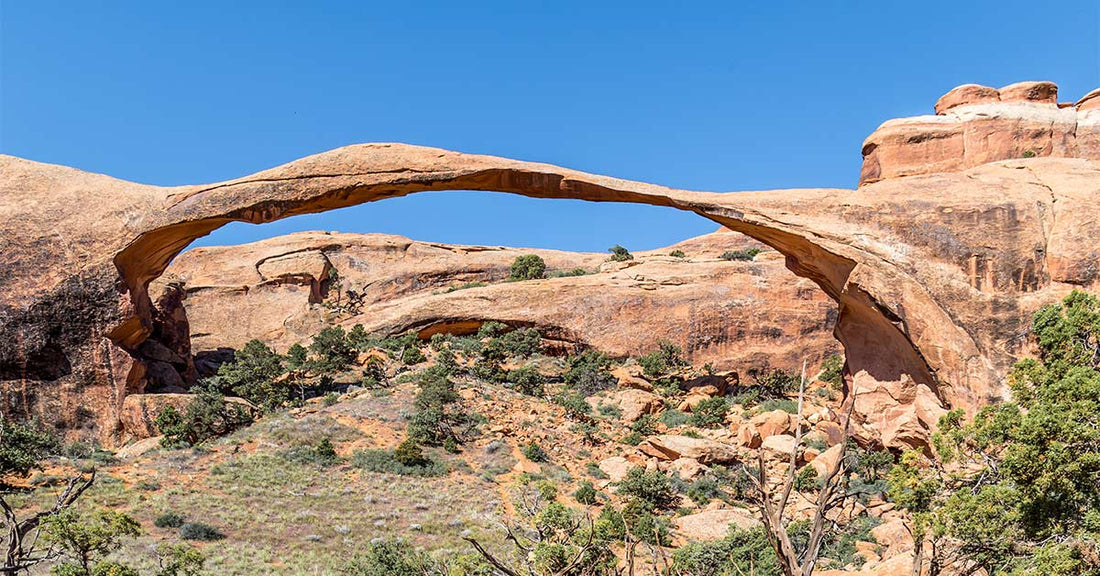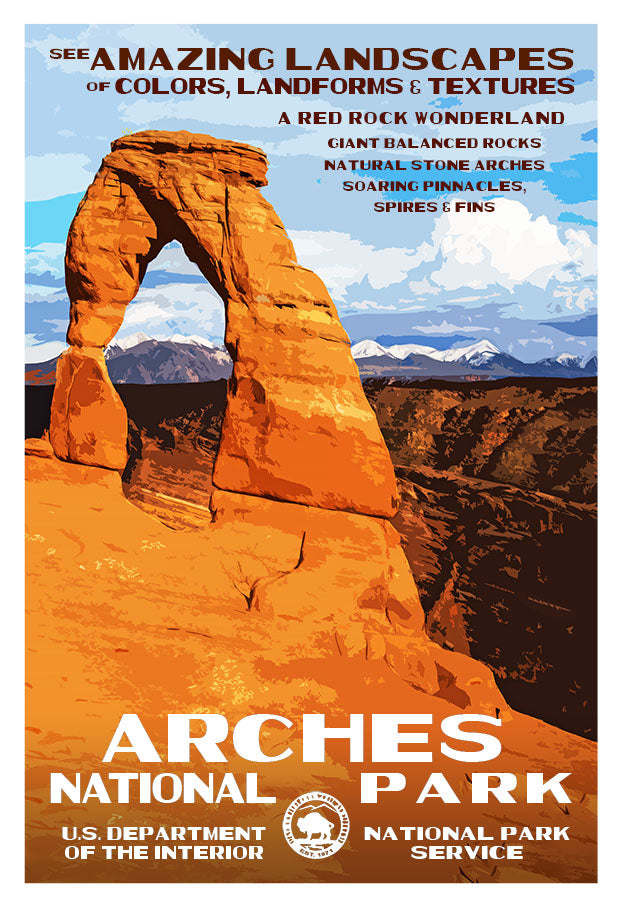A Red Rock Wonderland
Visit Arches National Park and discover an amazing landscape of landforms, textures and contrasting colors unlike any other place in the world. The park features more than 2,000 natural stone arches, hundreds of soaring pinnacles, massive fins and giant balanced rocks. Discover this red rock wonderland and be amazed by its natural formations, beautiful colors and inspiring sunsets.
Arches National Park lies north of Moab in Utah. Bordered by the Colorado River in the southeast, it’s known as the site of more than 2,000 natural sandstone arches, such as the massive, red-hued Delicate Arch in the east. Long, thin Landscape Arch stands in Devils Garden to the north. Other geological formations include Balanced Rock, towering over the desert landscape in the middle of the park.
The park lies above an underground evaporite layer or salt bed, which is the main cause of the formation of the arches, spires, balanced rocks, sandstone fins, and eroded monoliths. Over millions of years, the salt bed was covered with debris eroded from the Uncompahgre Uplift to the northeast.
Except for isolated remnants, the major formations visible in the park today are the salmon-colored Entrada Sandstone, in which most of the arches form, and the buff-colored Navajo Sandstone. These are visible in layer cake fashion throughout most of the park. Over time, water seeped into the surface cracks, joints, and folds of these layers. Ice formed in the fissures, expanding and putting pressure on surrounding rock, breaking off bits and pieces. Winds later cleaned out the loose particles. A series of free-standing fins remained. Wind and water attacked these fins until, in some, the cementing material gave way and chunks of rock tumbled out. Many damaged fins collapsed. Others, with the right degree of hardness and balance, survived despite their missing sections. These became the famous arches.
Although the park's terrain may appear rugged and durable, it is extremely fragile. More than 1 million visitors each year threaten the fragile high desert ecosystem. The problem lies within the soil's crust which is composed of cyanobacteria, algae, fungi, and lichens that grow in the dusty parts of the park.
Click here to see the Arches National Park poster.
Join the growing community of 80k+ National Park enthusiasts to receive insider deals and updates.



